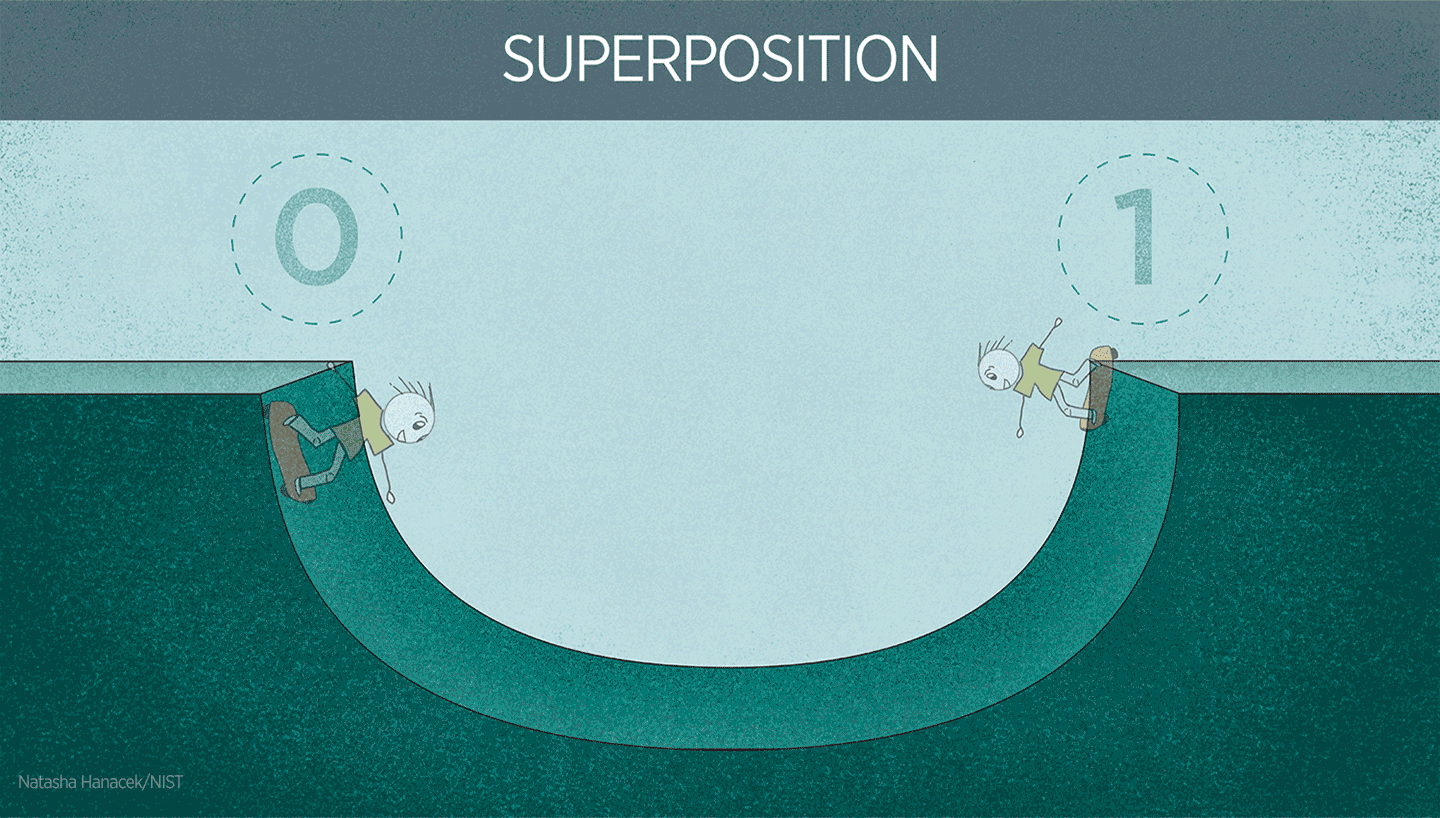The Strange World of Quantum Physics
Quantum computers would get their special powers by exploiting the strange rules of the very small, such as quantization.
In our everyday world, objects appear to move in a continuous path. Water rises steadily in a bathtub. A rocket climbs smoothly into the sky. But in the quantum realm, things jump and jitter. An electron bound to the center of an atom can instantly leap from one orbit to another, essentially disappearing from the original orbit and reappearing at the new one. And while a firefighter continuously changes energy while sliding down a pole, electrons in an atom make quantum hops up and down a fixed set of energies, like rungs on a ladder.

This quantization of energy in electrons and other particles can be very useful for encoding information in the binary digit system of 0s and 1s that computers use to process data. A lower-energy state of an atom can represent a 0 and a higher-energy state can be a 1.
Things get really weird, though, when you add in another quantum rule called superposition.

“This idea of superposition is very strange, and it's hard to get used to the concept,” says University of Oregon physicist Dave Wineland, who received the 2012 Nobel Prize in physics for his experimental work in quantum mechanics at NIST. Wineland and his colleagues witness superposition almost every day in their experiments with ions, or electrically charged atoms.
“What you can think of as a good analogy is a marble that can roll back and forth in a bowl,” he says. “In our atomic ion experiments, we can make an atomic marble. We can make it roll back and forth just as a marble would in a real bowl. And at some instance of time then, the atom will be on the right side of the bowl and a little bit later on the left side of the bowl.”
“We can do things like that, which we can understand from our everyday experience, but we can also create a state where the atom is both on the right side of the bowl and the left side of the bowl at the same time,” he explains.
This could be very useful for information technology.
If the ion is in a superposition on the left and right side of the bowl, it can act as a 0 and 1 at the same time. In contrast, ordinary bits of data can only be a 0 or 1. Quantum bits, or qubits, can therefore, be used to process larger amounts of information much more quickly than traditional ones.
But superpositions are very fragile. Stray noise can alter the superpositions, leading to errors that can be tricky to correct. Measuring an ion—or otherwise disturbing it—destroys the superposition, forcing the ion to be in a 0 or 1 state, and it acts like an ordinary bit. Destroying superpositions is called decoherence, and it’s a major problem. So, researchers must protect qubits, and isolate them.

Another ingredient for quantum computers is entanglement, and it’s perhaps the strangest quantum property of them all. It’s a sort of quantum marriage between qubits.
Imagine you have an ion acting as a qubit, and it’s in a superposition of 0 and 1, and you entangle it with a second ion, also 0 and 1. The two entangled ions are going to maintain a special relationship, even if they are separated by large distances and are completely isolated from one another.

For example, this relationship could mean that they will end up with the same value, either 0 or 1, when one of them is measured and its superposition is destroyed. This may not seem too strange until you realize that an ion will collapse randomly into a 0 or 1, and its partner ion will then be observed to have the same value, even if it’s halfway across the galaxy. Albert Einstein pointed out this “spooky action at a distance,” and it disturbed him greatly, but this behavior has been confirmed time and again, including in a recent landmark NIST experiment.
Entanglement is an extremely useful commodity. Measure the value of one qubit and it determines the value of a second entangled qubit. If you want to perform a mathematical computation to solve a problem, you can put each qubit into a superposition of different values and then search for the solution by measuring the qubits and looking at the different possible values of the qubits. And when you entangle more than two qubits, the system can perform exponentially more computations at the same time, since it has more superpositions of 0s and 1s. But the more qubits there are, the faster they tend to decohere.
That’s why there are still no quantum computers that can perform truly useful tasks. Researchers need to create enough entangled qubits that are long-lived enough to produce useful calculations. Otherwise, decoherence will cause the system to essentially crash before it can do anything worthwhile.

So, researchers are trying to make qubits every way they can. Any kind of particle or system that obeys the rules of quantum physics, from ions to superconducting circuits, can act as qubits. Some types of qubits are longer lived, some can be manipulated more quickly, and some are more easily entangled.

